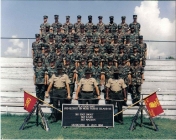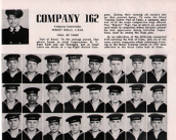Specialty Summary. Engages enemy forces utilizing advanced technologies and weapon systems to direct airstrikes in close proximity of friendly forces. Controls and executes operational air and space power. Operates in austere combat environments independent of an established airbase or its perimeter defenses. Employed as part of a joint, interagency or coalition force to support Combatant Commander objectives. Primarily assigned to U.S. Army Installations. Member of Battlefield Airman grouping. IAW AFPD 10-35, Battlefield Airman. Related DoD Occupational Subgroup: 125000.
Duties and Responsibilities: Operates communications, digital networks and video targeting equipment. Integrates, plans and briefs maneuver commanders and staff on combat capabilities of air and space power. Processes and requests air and space resources to support ground maneuver units.
Targets and controls surface-to-surface and air-to-surface-fires. Plans, coordinates and conducts fires to accomplish supported commander’s objectives, includes Close Air Support (CAS) and supporting arms for surface elements, command, control, communications, computers, intelligence, surveillance and reconnaissance (C4ISR) in support of Combined Forces Air Component Commander’s assets. Employs visual, electronic and marking equipment to direct aviation assets to target. Issues weapons release clearance.
Conducts infiltration, surface movement, and exfiltration functions with combat maneuver forces. Performs mounted and dismounted navigation. Operates in combat vehicles. Performs site selection. Performs small unit tactics. Administers combat lifesaving assistance. Performs and supervises advanced physical conditioning programs.
Specialty Qualifications:
Knowledge. Knowledge of theater air and space operations to include; weapons systems and munitions characteristics and capabilities; aircraft employment; intelligence, surveillance, and reconnaissance capabilities; targeting systems; close air support tactics, techniques and procedures; Military Decision Making Process; joint fires integration.
Combat field skills to include: tactical communications and computer procedures and equipment; data links; antenna theory; map, global positioning equipment, navigation techniques, and military symbology; small unit tactics; close quarter combat; signaling and marking; individual and crew-served weapons employment; battlefield lifesaving procedures; chemical warfare defense equipment.
Applies knowledge of: occupational risk management; Joint, Army and Air Force manuals, instructions, technical orders, and regulations; physical readiness; Theater Air Ground System; Air Support Operations Center (ASOC) and TACP vehicle and support equipment operations, management, and operator maintenance; Army and Air Force supply and mobility procedures; Army command and unit staff functions and taskings.
Education. For entry into this specialty, completion of high school with courses in advanced mathematics and basic computer skills is desirable.
Training. The following training is mandatory for award of the AFSC indicated:
1C431. Completion of the tactical air control party apprentice course.
1C451. Completion of Survive, Evade, Resistance and Escape (SERE) SV-80-A course.
1C471. Completion of the tactical air control party craftsman and USJFCOM-accredited Joint Terminal Attack Controller (JTAC) Qualification courses.
Experience. The following experience is mandatory for award of the AFSC indicated:
1C451. Qualification in and possession of AFSC 1C431. Also, experience in ASOC or TACP operations.
1C471. Qualification in and possession of AFSC 1C451. Also, experience in supervising ASOC or TACP operations.
1C491. Qualification in and possession of AFSC 1C471. Also, experience in managing ASOC or TACP work centers. Experience in both ASOC and TACP operations is desired.
Other. The following are mandatory as indicated:
Successful completion of the TACP Physical Ability and Stamina Test (PAST).
For entry, award and retention of AFSCs 1C411/31/51/71/91/00: Compliance with the medical standards for Ground Based Controller Duty as defined in AFI 48-123, Medical Examinations and Standards. Qualification to operate government vehicles according to AFI 24-301, Vehicle Operations. Ability to speak English clearly and distinctly as demonstrated by Reading Aloud Test administered in accordance with AF Pamphlet 48-133, Physical Examination Techniques. Must maintain eligibility to deploy and mobilize worldwide. Personnel with an Assignment Limitation Code of C‑1 or C-2 may retain AFSC 1C4X1 as long as they are capable of successfully completing all core tasks in the 1C4X1 Career Field Education and Training Plan.
Qualification to bear firearms according to AFIs 31-207, Arming and Use of Force by Air Force Personnel; 36‑2226, Combat Arms Training and Maintenance (CATM); and AFSOCI 36-2204, Special Tactics Operator Training.
For award and retention of AFSC 1C471/91/00, certification as a JTAC according to AFI 13-112, Volume 1, Joint Terminal Attack Controller Training Program, and Volume 2, Joint Terminal Attack Controller Standardization/Evaluation Program. For personnel certified as a JTAC, regardless of skill level, permanent JTAC decertification IAW AFI 13-112, Volume 2, will result in removal from the 1C4XX AFSC. Certification as a JTAC according to AFI 13-112, Volumes 1 and 2 and award of SEI 914, JTAC, is required prior to attendance at the 7-level awarding course.
For award and retention of AFSCs 1C451/71/91/00, must maintain an Air Force Network License according to AFI 33-115, Vol 2, Licensing Network Users and Certifying Network Professionals.
3.5.5. Specialty requires routine access to Secret material or similar environment. For award and retention of AFSCs 1C4XX, completion of a current National Agency Check, Local Agency Checks and Credit (NACLC) according to AFI 31‑501, Personnel Security Program Management. NOTE: Award of the 3-skill level without a completed NACLC is authorized provided an interim Secret security clearance has been granted according to AFI 31-501.




